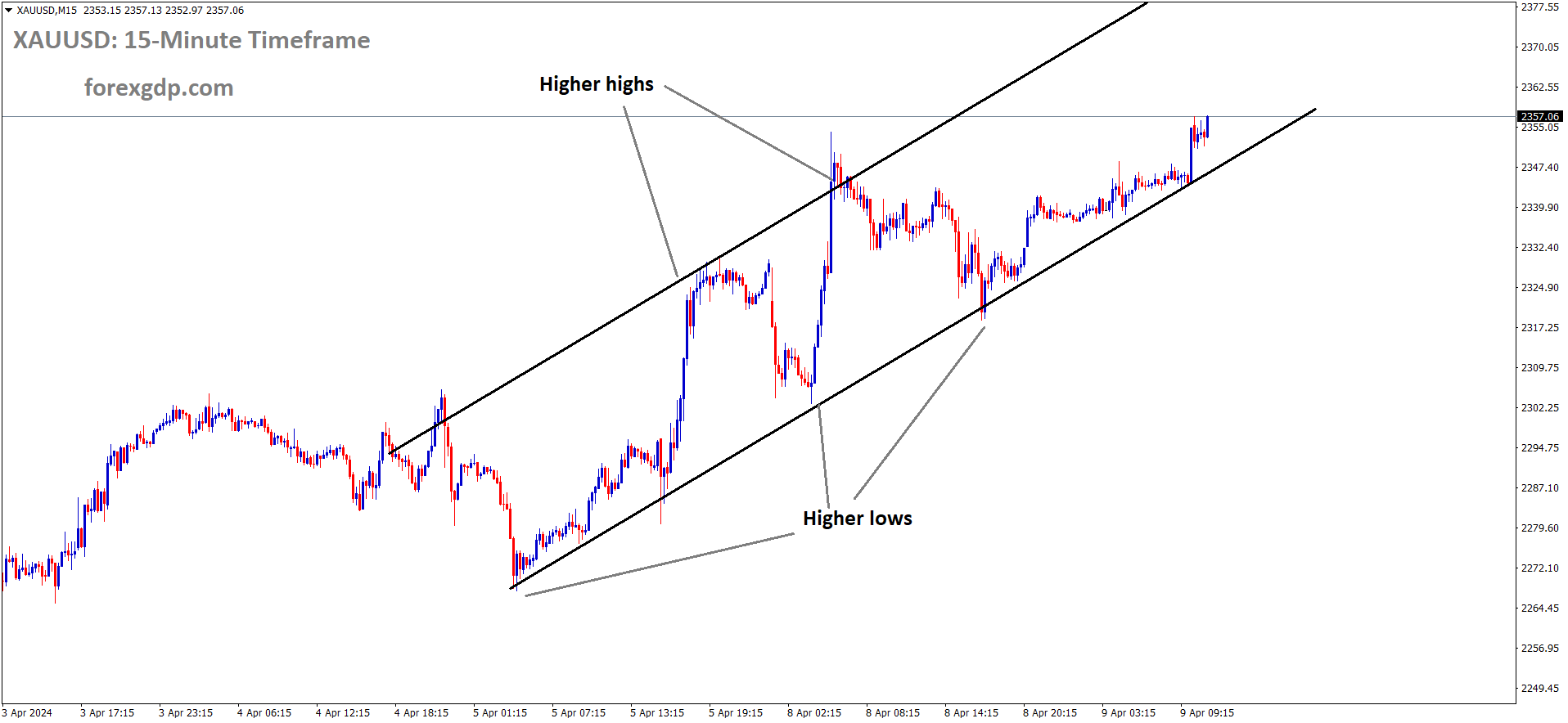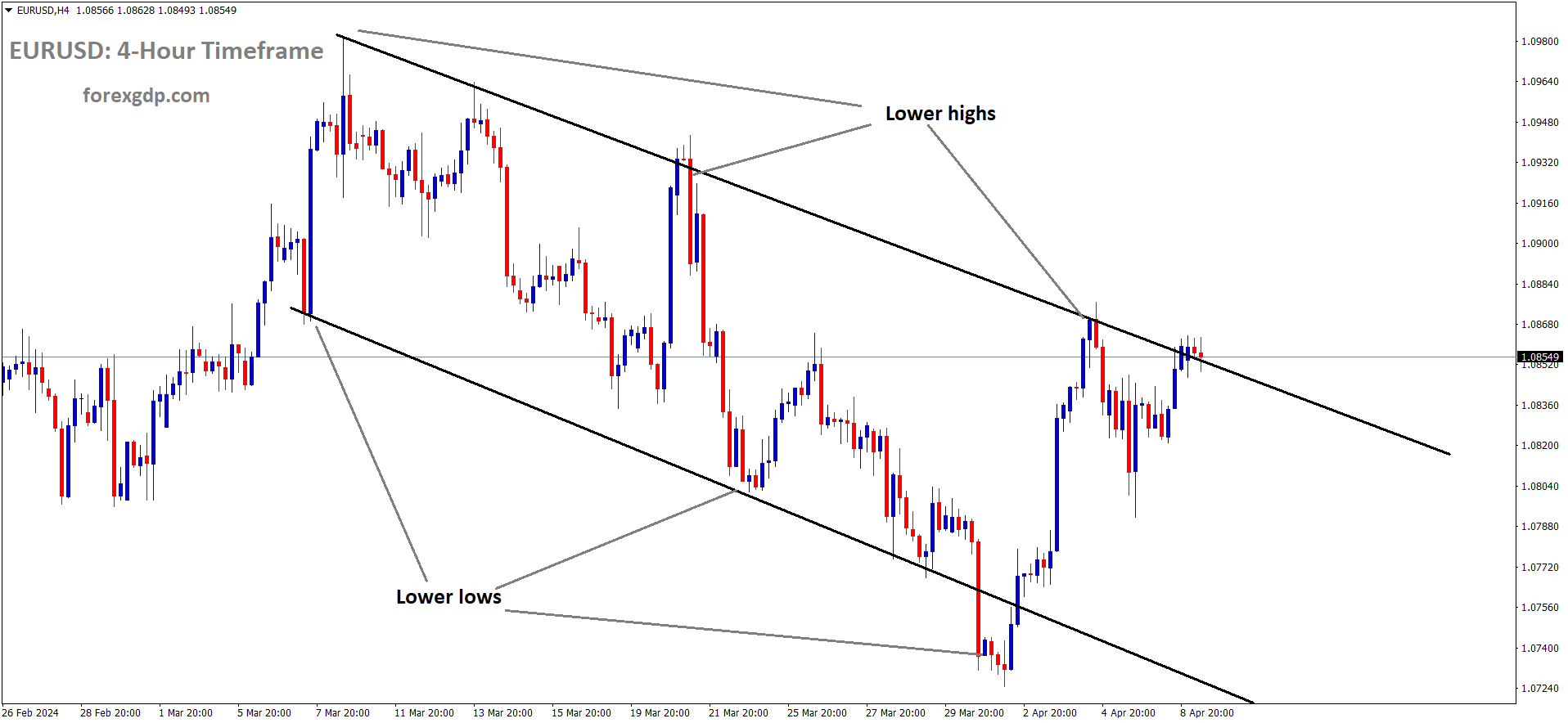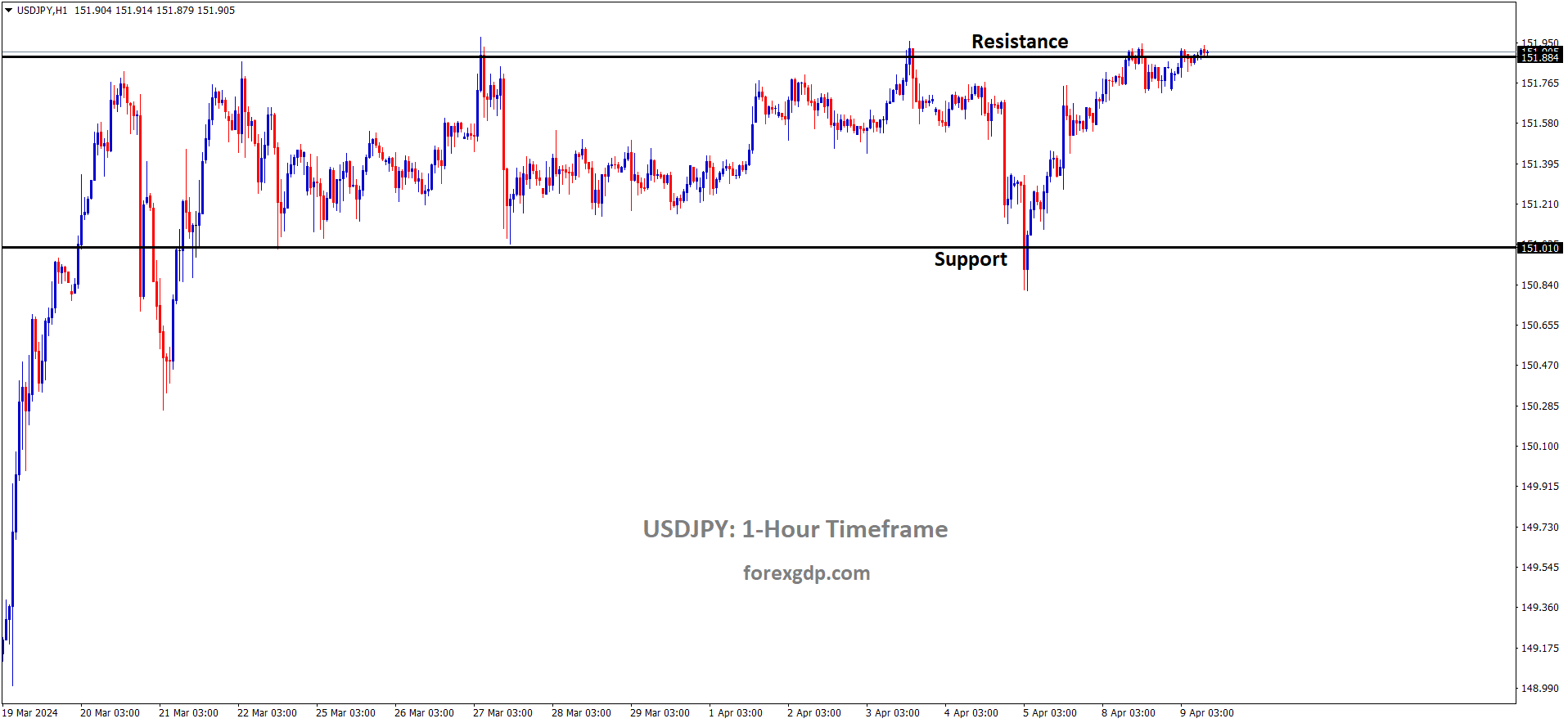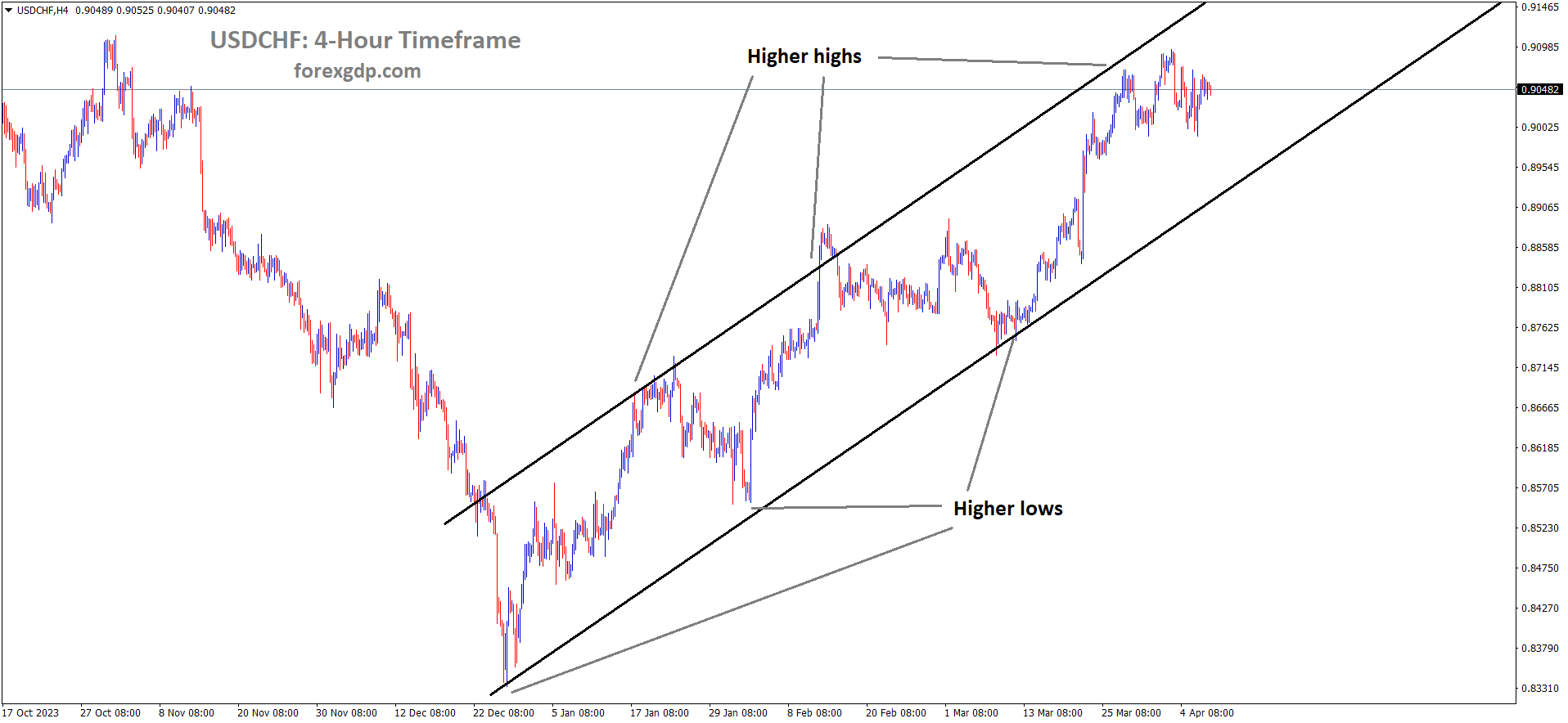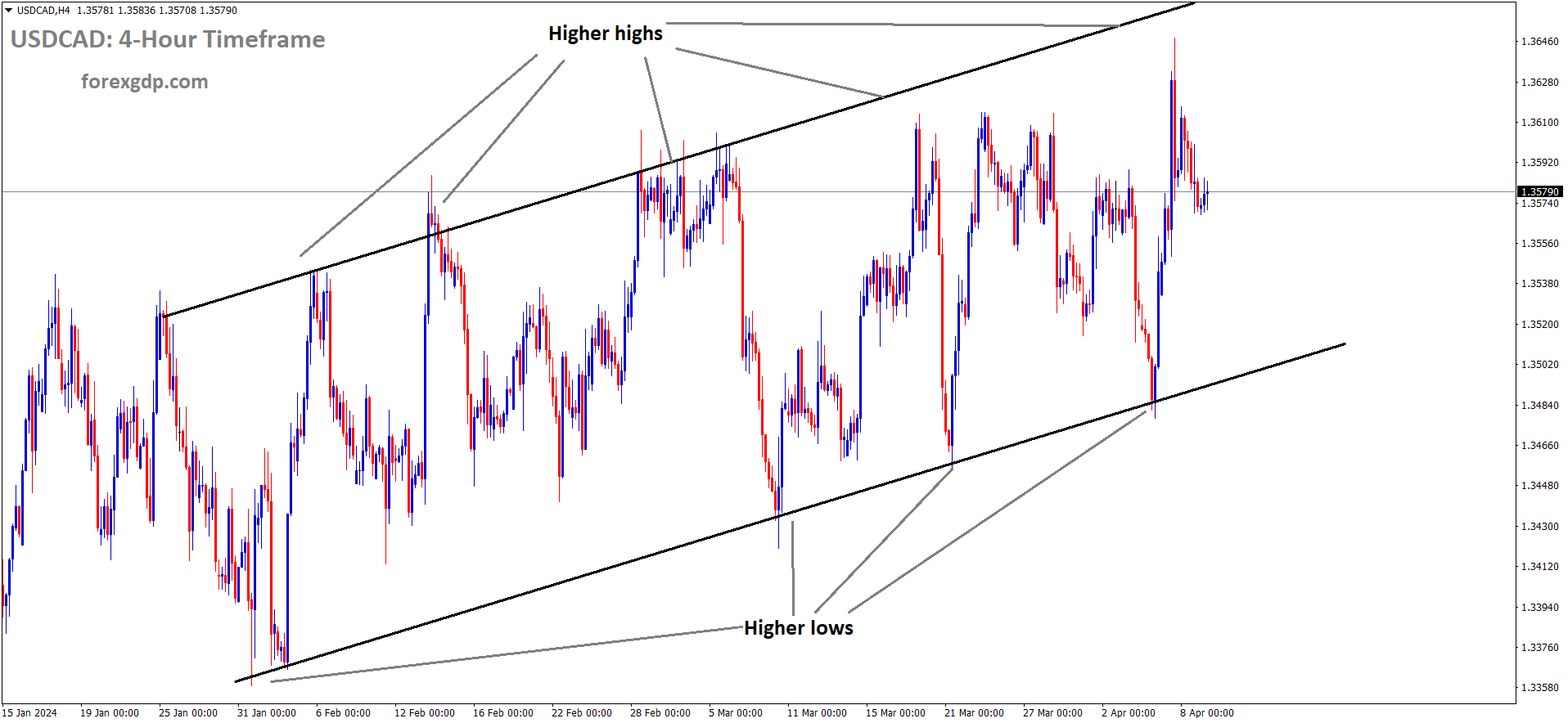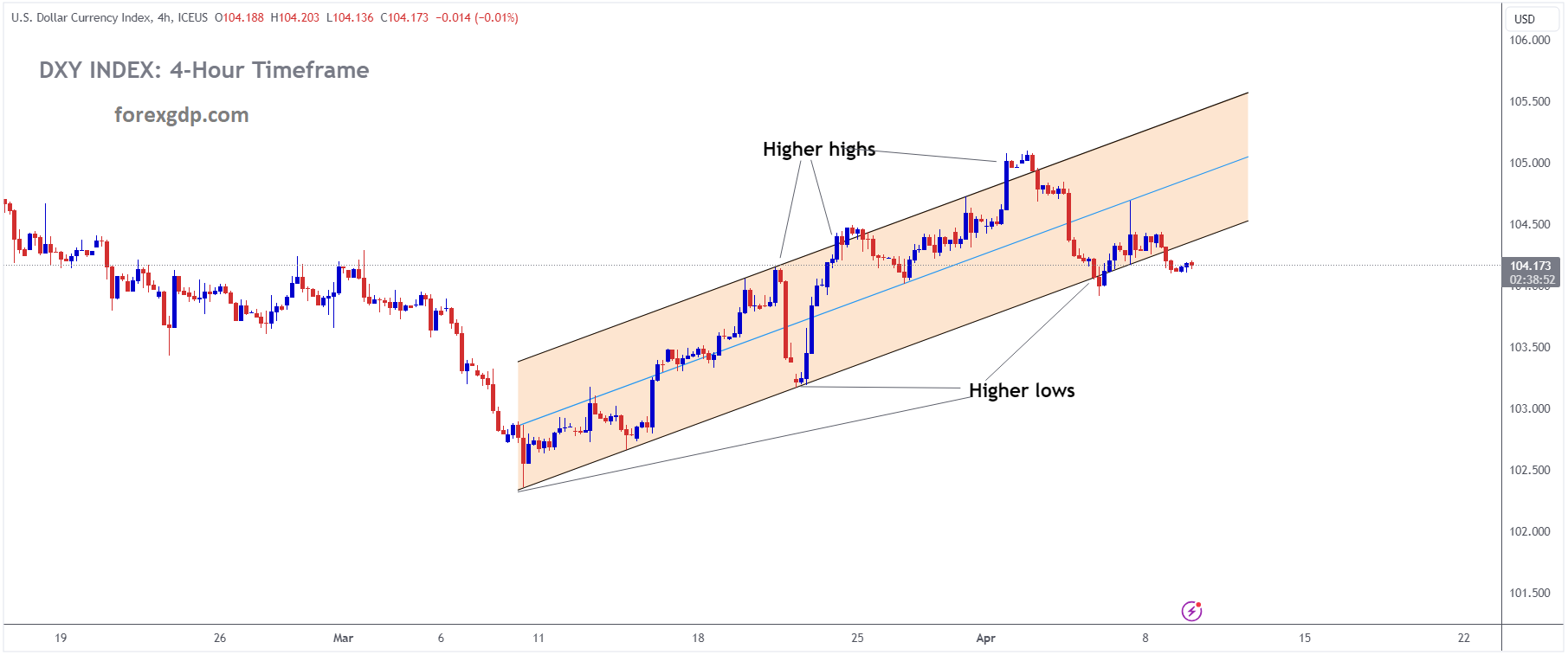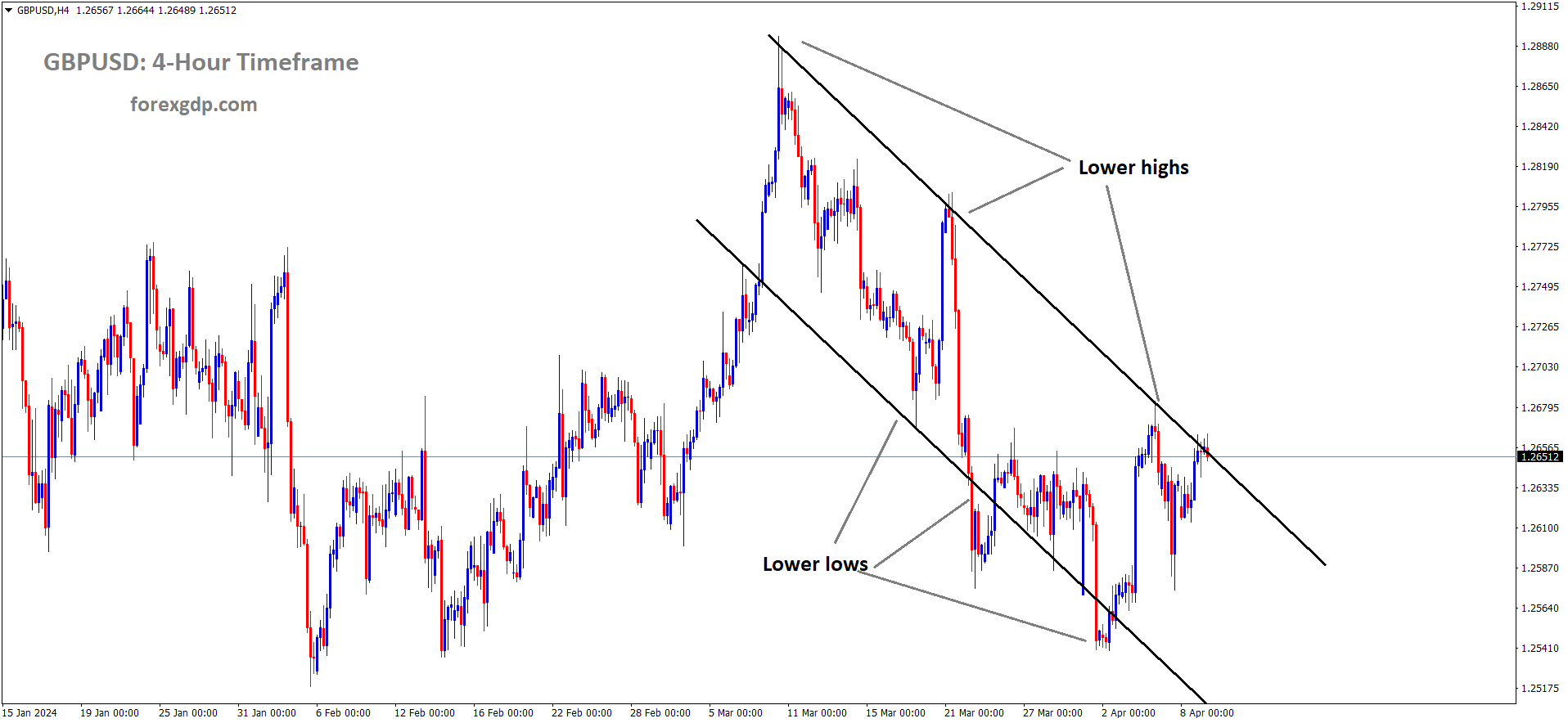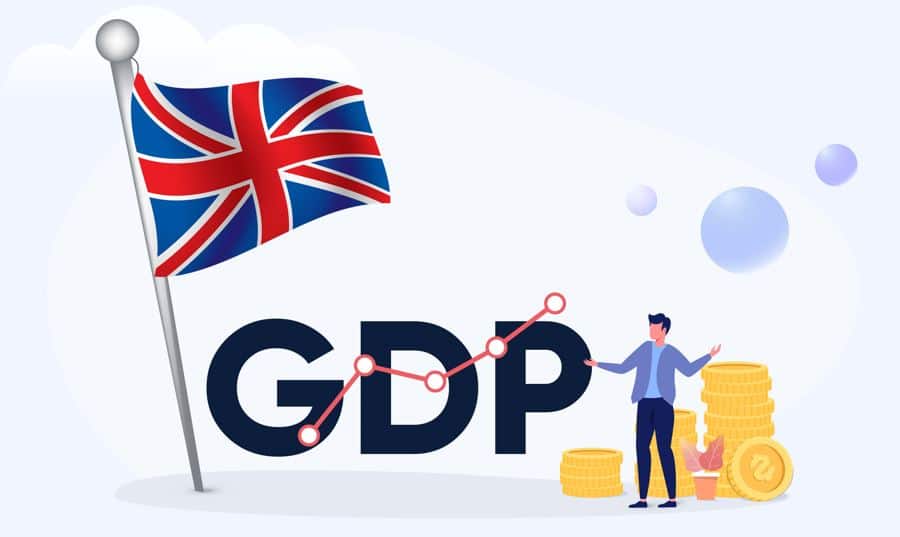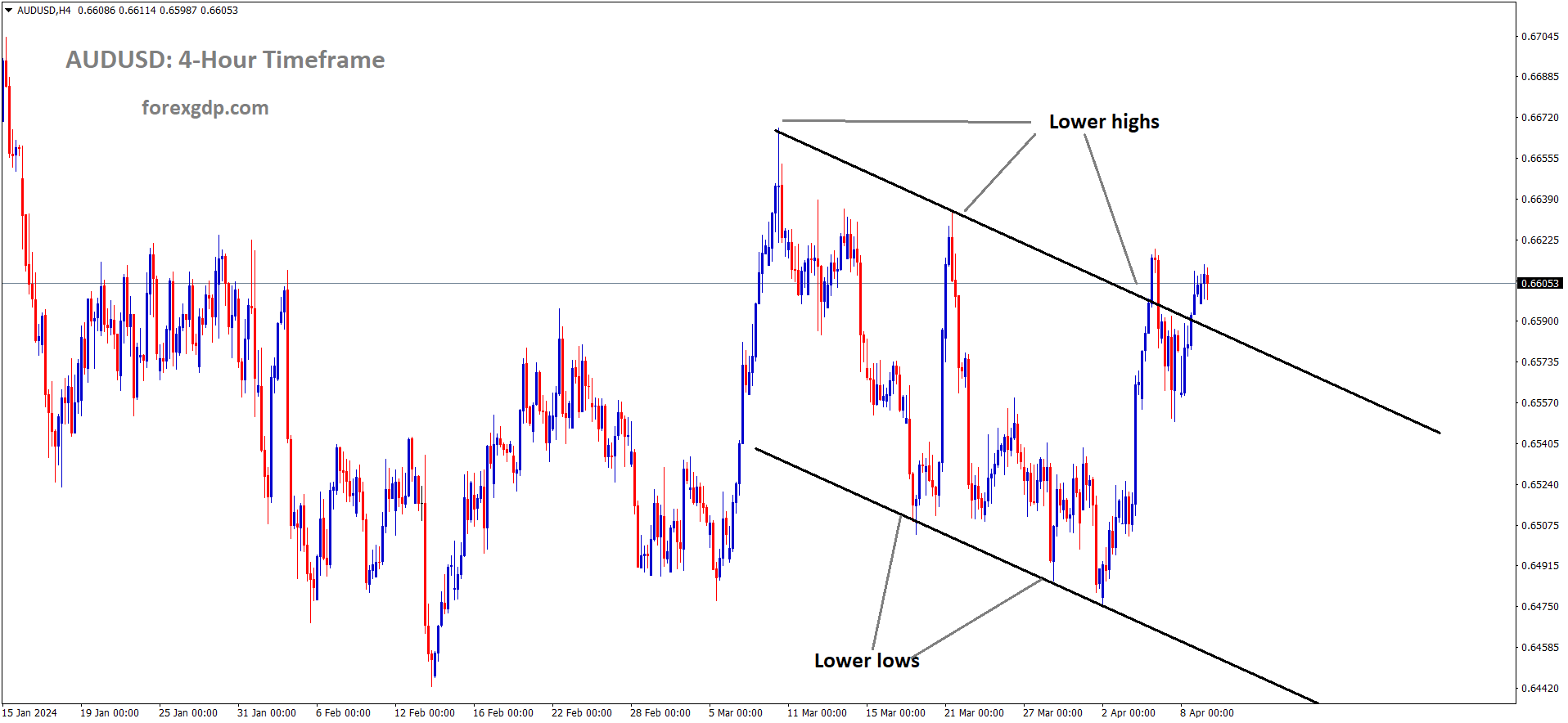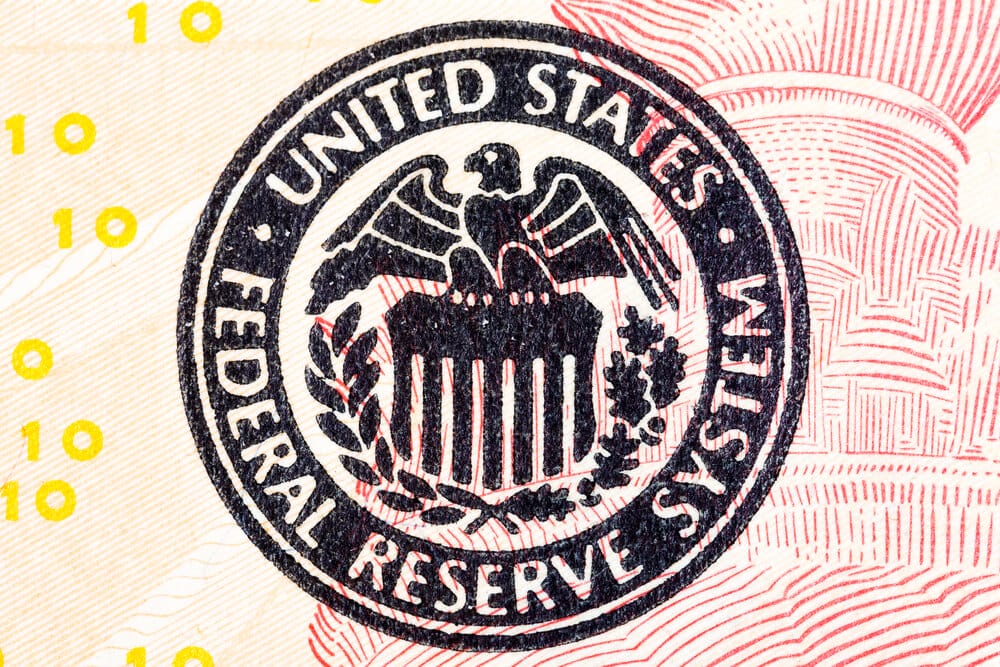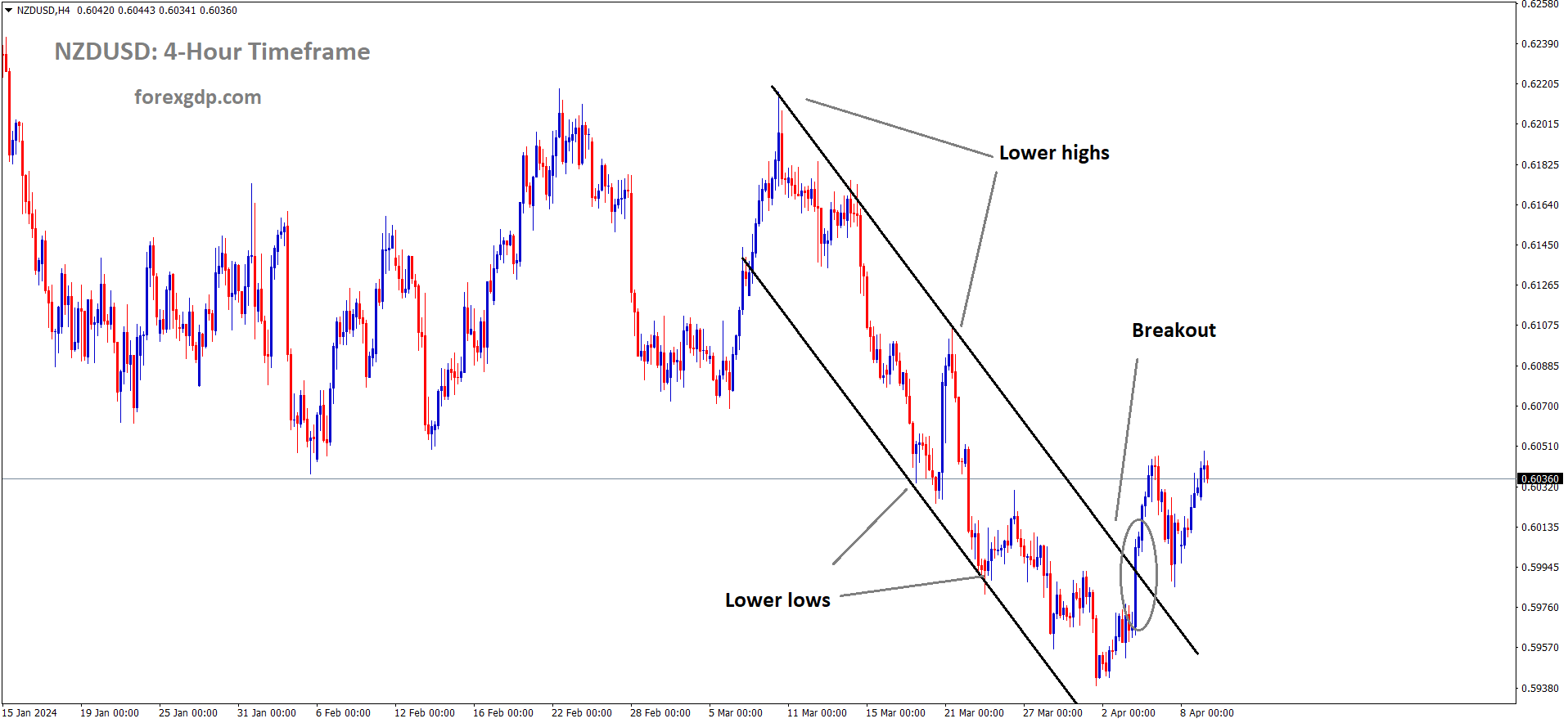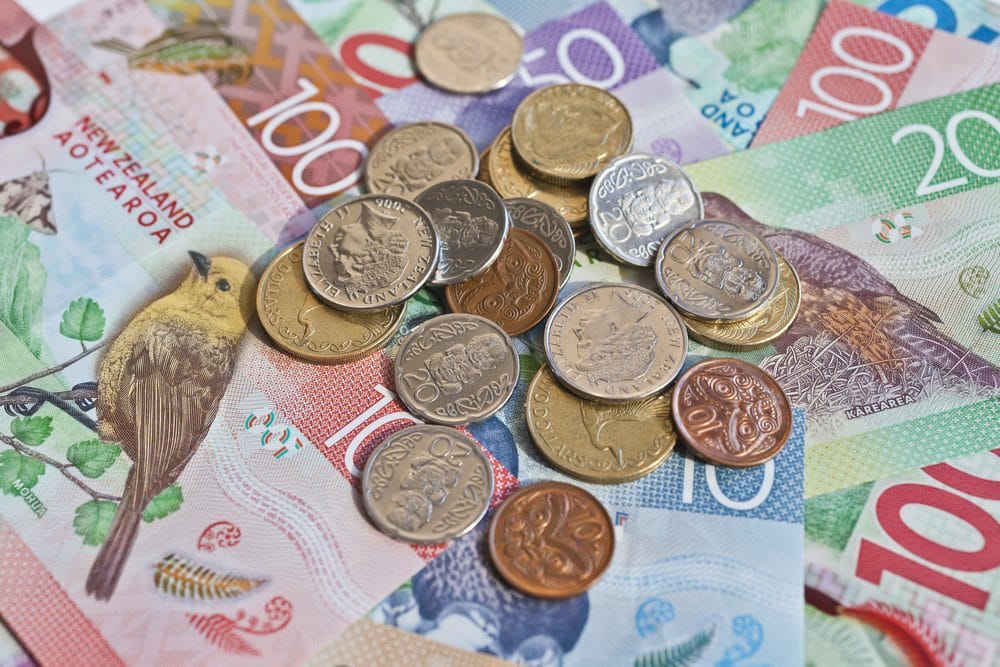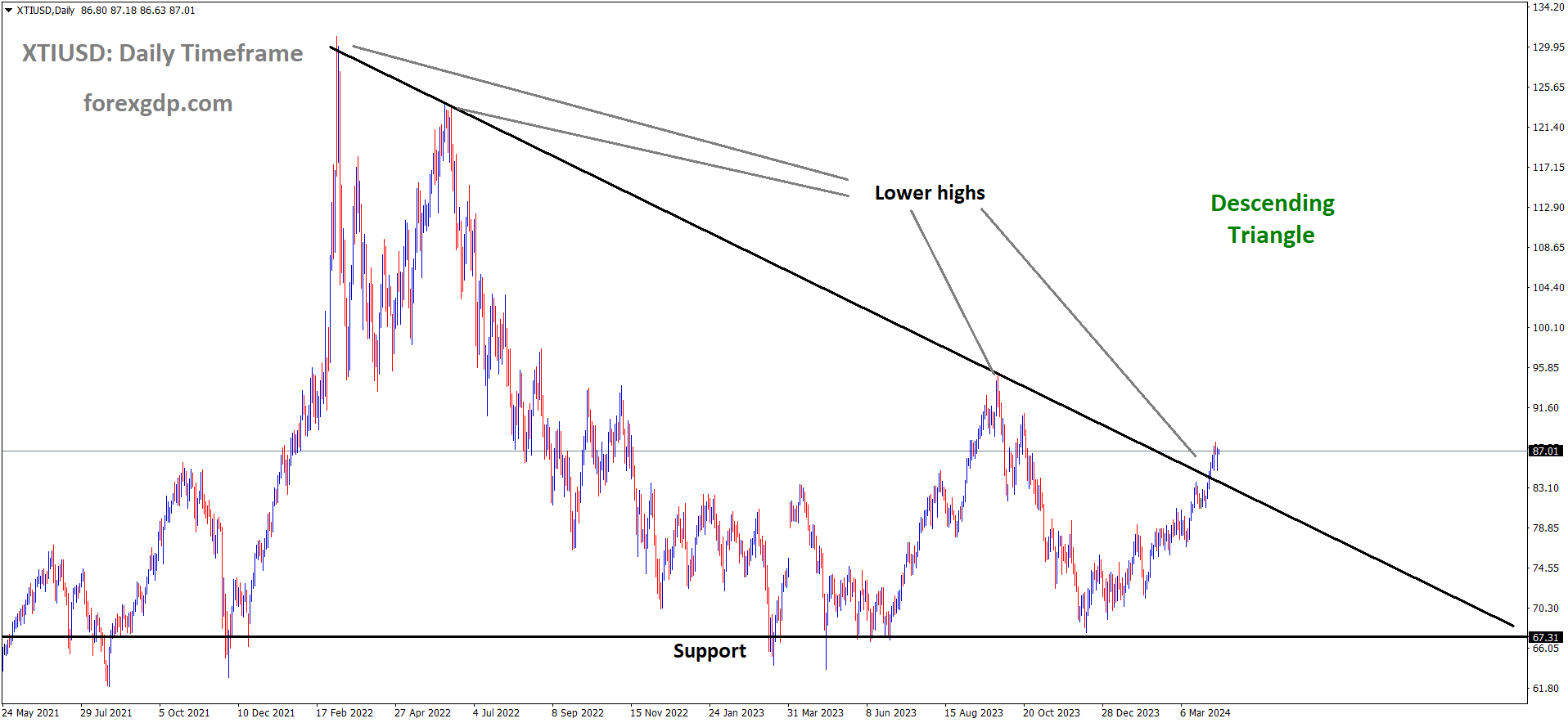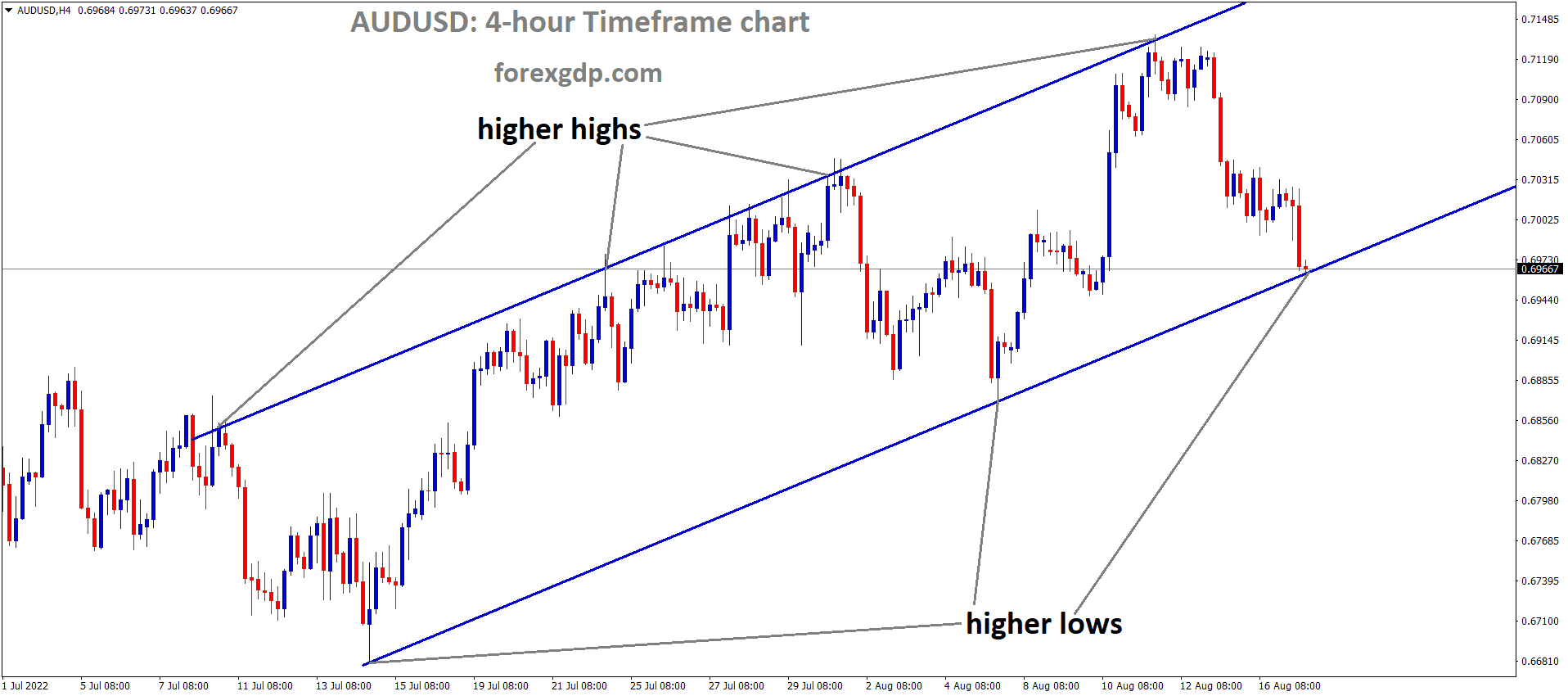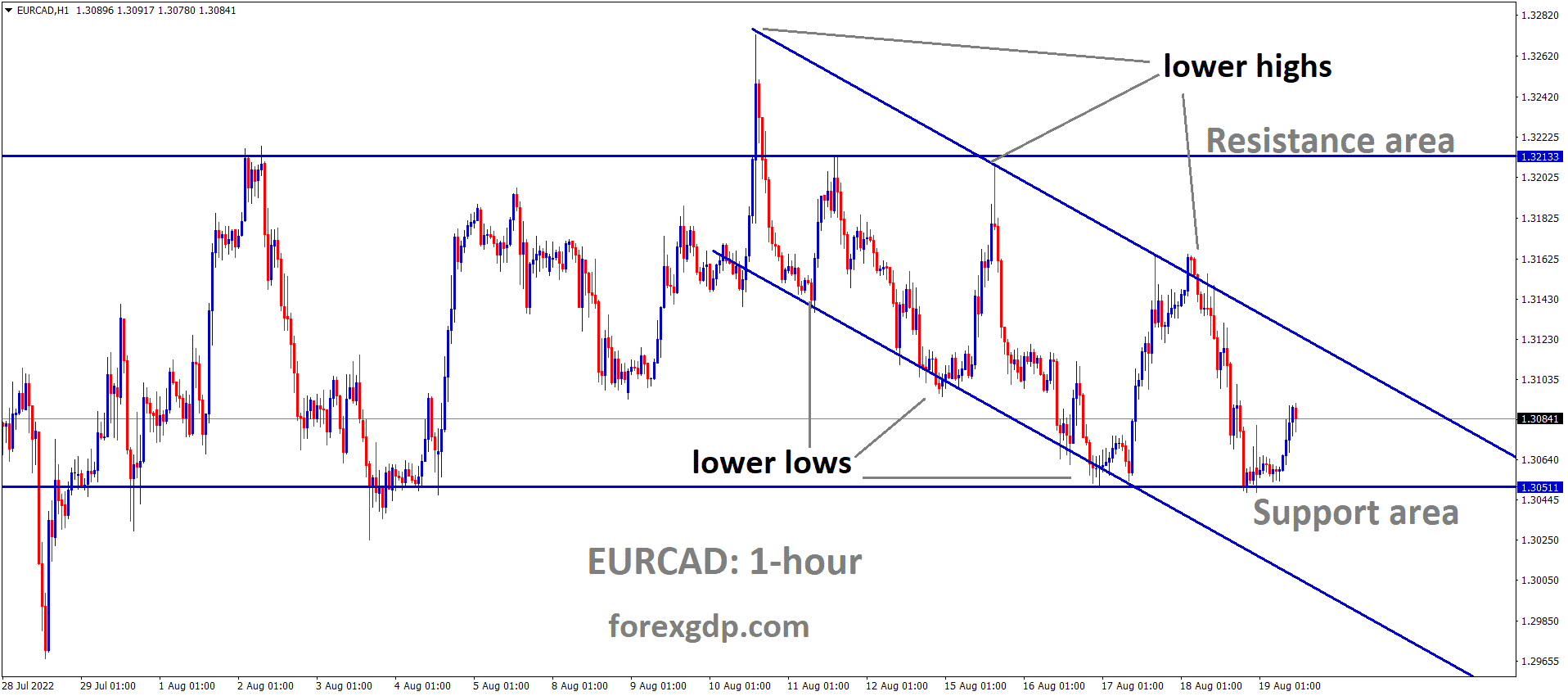XAUUSD Gold price is moving in an Ascending channel and the market has rebounded from the higher low area of the channel
XAUUSD – Gold Bulls Cautious Near All-Time Highs Amid Reduced Fed Rate Cut Expectations
The Gold prices are flying high after the Iran threatened military troops against Israel for its embassy attacked in Syria. Israel and Hamas ceasefire talks under the progress. Fed Members said inflation is still above 2% target and labour market tightened in the US economy. So June month rate cut bets also faded by the economists view, So Gold prices are moving higher against USD.
The gold price (XAU/USD) is currently facing extremely overbought conditions on the daily chart, which is deterring traders from making fresh bullish bets. This hesitation stems from the anticipation that the Federal Reserve (Fed) may delay cutting interest rates. Additionally, the hawkish expectations from the Fed are supporting elevated US Treasury bond yields and providing some strength to the US Dollar (USD), thereby limiting gains for the non-yielding yellow metal.
Traders are also displaying reluctance to take aggressive positions ahead of the release of key economic indicators, such as the US consumer inflation data and the Federal Open Market Committee (FOMC) meeting minutes scheduled for Wednesday.
Despite these factors, geopolitical risks, particularly surrounding the deadlocked talks over a ceasefire between Israel and Hamas, coupled with Iran’s threat of military action against Israel, are still supporting the gold price. However, the optimism in the market is tempered by Israel’s Prime Minister Benjamin Netanyahu’s announcement of a potential ground offensive in Gaza, which is dampening hopes for a ceasefire.
Looking ahead, investors are closely watching the US Consumer Price Index (CPI) and the FOMC meeting minutes for insights into the Fed’s future rate-cutting decisions. These events are expected to provide a fresh directional impetus to the XAU/USD pair.
EURUSD – Rebounds to 1.0850 Amid Sentiment Improvement, Focus on US Inflation
The ECB Policy meeting is scheduled this week and expected to keep the rates at 4.50% is widely expected. US CPI Data is scheduled tomorrow and is expected to rise as 3.4% in March month versus 3.2% in February month.
EURUSD is moving in the Descending channel and the market has reached the lower high area of the channel
Despite some trimming of bets supporting Federal Reserve (Fed) rate cuts, which had been leaning towards the June meeting, market sentiment remains positive. This sentiment is reflected in the opening of S&P 500 futures, which start on a slightly positive note. Additionally, 10-year US Treasury yields have surged to a four-month high, nearing 4.43%, as expectations for Fed rate cuts have shifted to the second half of this year.
However, despite robust US Nonfarm Payrolls (NFP) data for March, which may have dampened hopes for rate cuts, the US Dollar exhibits subdued performance. The US Dollar Index (DXY), tracking the currency against six major counterparts, experiences a slight decline to 104.30.
Looking ahead, investors are eagerly awaiting the release of the US Consumer Price Index (CPI) for March, scheduled for Wednesday. Projections suggest that annual headline inflation may have accelerated to 3.4% from 3.2% in February. Meanwhile, the core CPI, excluding volatile food and oil prices, is expected to have dipped slightly to 3.7% from 3.8% during the same period.
The outcome of these inflation figures could significantly influence expectations regarding the possibility of rate cuts in June. Strong inflationary pressures may eliminate the likelihood of rate cuts, while weaker figures could fuel speculation about the Fed shifting towards rate cuts.
On the Eurozone front, investor attention turns towards the European Central Bank’s (ECB) upcoming interest rate decision, set to be announced on Thursday. It is widely anticipated that the ECB will maintain its key borrowing rates at 4.5%. However, investors will be keenly observing for any indications or hints regarding the timing of potential rate cuts by the ECB.
USDJPY – BoJ’s Ueda Suggests Monetary Stimulus Reduction if Inflation Trends Towards 2% Target
The BoJ Governor Kazhao Ueda said inflation to Wage cycle is expected to increase in the coming months, we projected inflation will go above 2% in the next 1.5-2 Years. Wage hike from Firms has to watch in the real market, whether real wage hike driven the inflation trending to higher, then only we reduce stimulus in the faster pace, if wage hike does not reflected in the inflation rate then we keep monetary policy changes to lower at more time. Current policy stance did not change for some time until proper conclusion seen in the market trend.
USDJPY is moving in the Box pattern and the market has reached the resistance area of the pattern
Bank of Japan (BoJ) Governor Kazuo Ueda has provided insights on the inflation and policy outlook, emphasizing the importance of monitoring data and information to gauge potential acceleration in trend inflation towards the 2% target.
Ueda highlighted key factors that will be examined to assess the inflation trajectory. These include the realization of pay hikes from annual wage negotiations and the impact on service prices due to higher wages.
He stated that if trend inflation moves closer to the 2% target, there could be room to reduce the level of monetary stimulus. However, Ueda cautioned that if wage increases fall short of expectations or if the economy faces shocks from overseas, adjustments to the stimulus reduction pace may be necessary or the decision to reduce stimulus altogether could be postponed.
Moreover, Ueda noted that if the wage-inflation cycle accelerates more rapidly than anticipated, stimulus reduction may need to occur at a faster pace.
The BoJ’s baseline scenario anticipates trend inflation, currently slightly below 2%, to converge towards the 2% mark within the next 1.5 to 2 years. He also expressed confidence in the limited likelihood of inflation significantly undershooting this baseline forecast.
Regarding the impact of the March policy shift on bank profits, Ueda suggested it would likely be minimal. He clarified that the current guidance does not commit to maintaining the overnight call rate target at 0-0.1% until specific conditions are met.
USDCHF – Price at 0.9050, Awaits US CPI Data
The Iran Military adviser warned on Israel none of Safe on Israel with your diplomatic missions after the attack of our embassy in Syria. This news created more geopolitical tensions and may be rise the demand for Swiss Franc in the market. No ending of cease fire talks happened between Israel and Hamas so far told by US.
USDCHF is moving in an Ascending channel and the market has fallen from the higher high area of the channel
The decline is attributed to the weaker US Dollar (USD). However, the positive US March employment report and hawkish comments from Federal Reserve (Fed) officials could limit the pair’s downside.
The March US employment report revealed better-than-expected job additions, leading to speculation that the Fed might postpone its easing cycle. This resulted in the odds of a June rate cut dropping below 50% from the previous week’s around 57%, according to the CME’s FedWatch tool.
Fed Chair Jerome Powell mentioned that rate cuts could be considered if the US economy continues its current trajectory. Fed Governor Michelle Bowman also suggested that further action might be necessary to alleviate price pressures. Minneapolis Fed President Neel Kashkari indicated two potential interest rate cuts this year, although if inflation remains stagnant, no rate cuts might be warranted.
Investors are eagerly awaiting the US Consumer Price Index (CPI) data for March, scheduled for release on Wednesday. A stronger-than-expected CPI reading could dampen expectations for Fed rate cuts in June, potentially boosting the US Dollar (USD). Conversely, a softer reading could fuel speculation about rate cuts.
Moreover, according to reports from the Anadolu Agency, the chief Iranian military advisor issued a warning stating that Israeli diplomatic missions are no longer secure following an attack on the Iranian Consulate in Syria earlier this week. This escalation of tensions in the Middle East may contribute to a rise in demand for safe-haven assets such as the Swiss Franc (CHF), potentially exerting downward pressure on the USD/CHF pair.
USDCAD – below 1.3600 amid ongoing Middle East tensions supporting Oil prices
The Iran Military adviser warned on Israel none of Safe on Israel with your diplomatic missions after the attack of our embassy in Syria. This news created more geopolitical tensions and may be rise the demand for Oil prices in the market. No ending of cease fire talks happened between Israel and Hamas so far told by US.
USDCAD is moving in an Ascending channel and the market has fallen from the higher high area of the channel
As of my last update in January 2022, I can’t provide real-time information on specific terrorist organizations or their current activities.
On the flip side, the USD/CAD pair appears to have some support due to increased buying activity around the US Dollar (USD), fueled by higher US Treasury bond yields. The positive monthly US jobs report (NFP) released recently, coupled with the hawkish commentary from several Federal Reserve (Fed) officials, suggests a potential delay in interest rate cuts by the US central bank. Consequently, this upward pressure on the benchmark 10-year US government bond yield, reaching its highest level since late November, is revitalizing demand for the USD and could serve as a continued advantage for the currency pair.
Given this complex mix of fundamentals and the repeated struggles to breach the 1.3600 level convincingly, it would be prudent to wait for robust follow-through buying before considering further gains for the USD/CAD pair. Traders might opt to remain cautious on the sidelines, awaiting additional insights into the Fed’s stance on interest rate adjustments to determine the next directional move. Therefore, all eyes will be on the release of US consumer inflation figures for March and the forthcoming FOMC meeting minutes on Wednesday, as these events are expected to significantly impact the dynamics of the USD.
USD INDEX – Kashkari: Fed Must Keep Fighting Inflation
The US Minneapolis FED President Neel kashkari said inflation is still above 3% and not in 2% target, we need to short down the inflation to our level, labor market is still not hot like 12 months ago, now it is cooled now.
USD Index is moving in an Ascending channel and the market has reached the higher low area of the channel
Federal Reserve (Fed) Bank of Minneapolis President Neel Kashkari delivered a speech at the University of Montana on Monday, addressing the pressing issue of inflation. Kashkari emphasized the importance of the US central bank’s commitment to tackling inflation effectively, asserting that they cannot afford to fall short in this endeavor.
In his speech, Kashkari highlighted the current inflation rate, which stands at around 3%, exceeding the Fed’s target of 2%. He stressed the necessity for the Fed to bring inflation back down to the target level of 2% to maintain stability in the economy.
Moreover, Kashkari emphasized that the labor market, while not as heated as it was a year ago, remains tight. This observation indicates that despite some moderation, the labor market still presents challenges and requires attention from policymakers.
Key quotes from Kashkari’s speech include:
– “The inflation rate is running around 3% and the Fed has to get back down to 2%.”
– “Says the bank cannot ‘stop short’ on the inflation fight.”
– “Says the labor market is not ‘red hot’ like it was 12 months ago but it’s still tight.”
GBPUSD – Pound Sterling Holds Steady Ahead of March US Inflation Data
The UK GDP Growth will be higher as 0.80% in this year forecasted by BoE, it is slight recover from second half of 2023. March retail sales shows robust growth in Foods, energy prices. February month GDP data is scheduled on Friday, January month GDP come at 0.20% is remarkable.
GBPUSD is moving in the Descending channel and the market has reached the lower high area of the channel
In the London session on Tuesday, the Pound Sterling (GBP) remains range-bound around 1.2660 against the US Dollar (USD). The GBP/USD pair maintains a sideways trajectory as market attention shifts towards the upcoming release of the United States Consumer Price Index (CPI) data for March, scheduled for Wednesday. This data release is anticipated to offer insights into when the Federal Reserve (Fed) might initiate interest rate reductions.
Similarly, the US Dollar shows limited movement ahead of the inflation data, with the US Dollar Index (DXY), monitoring the USD against six major currencies, trading slightly above 104.00.
Meanwhile, the Pound Sterling sees a modest uptick in demand following surveys indicating that the United Kingdom’s economy is poised for modest growth this year, rebounding from a technical recession experienced in the latter part of 2023. Projections from the UK Office for Budget Responsibility (OBR) suggest a growth rate of 0.8% for the year, attributing the recovery to revived domestic demand despite ongoing geopolitical tensions causing supply chain disruptions.
Investor focus this week will be on the UK monthly Gross Domestic Product (GDP) data and February’s factory data, scheduled for release on Friday. These figures will provide insights into the economic landscape following the 0.2% GDP expansion recorded in January, with particular attention on the performance of the manufacturing sector, often considered a leading indicator of overall demand.
In terms of market movement, the Pound Sterling remains subdued, mirroring the path of the US Dollar as investors await the release of the US Consumer Price Index (CPI) data for March. This data is expected to show a slower pace of monthly headline and core inflation compared to February, providing crucial cues for the Fed’s interest rate trajectory. Conversely, speculation grows regarding potential interest rate cuts by the Bank of England (BoE) from its June meeting, particularly amidst lower-than-expected UK inflation figures in the early months of the year. Furthermore, optimism emerges as large businesses in the UK anticipate a reduction in economic uncertainties, as indicated by a recent survey by audit and consultancy firm Deloitte, suggesting a potentially brighter outlook for the UK economy.
AUDUSD – AUD Holds Near Psychological Level, Awaits US CPI
The Australia Westpac consumer confidence data for the month of April declined at -2.4% versus -1.8% fall in March month. Growth in the US economy driven by fast Job growth and higher GDP data makes doubtful for RBA to cut its interest rates in this year.
AUDUSD is moving in the Descending channel and the market has reached the lower high area of the channel
The Australian Dollar (AUD) retains its recent gains, defying the subdued Westpac Consumer Confidence data released on Tuesday. The AUD/USD pair finds support from a weakened US Dollar (USD), buoyed by an improved risk appetite among investors.
Driving the strength of the Australian Dollar is a robust domestic equity market, as evidenced by the ASX 200 Index poised for gains. Investor focus remains fixed on the Reserve Bank of Australia’s (RBA) upcoming interest rate decisions. Growing skepticism surrounds the necessity for RBA interest rate cuts in 2024, particularly following positive US data reinforcing expectations of a prolonged higher interest rate stance by the Federal Reserve (Fed).
The US Dollar Index (DXY) faces challenges as the Federal Reserve closely monitors incoming data, leading to market fluctuations. Traders eagerly anticipate the release of the US Consumer Price Index data scheduled for Wednesday, along with Australian Consumer Inflation Expectations and Chinese consumer prices slated for Thursday.
In market movements, the Australian Dollar maintains its position despite weaker Consumer Confidence data. Australia’s Westpac Consumer Confidence declined by 2.4% in April, following a previous fall of 1.8%. Additionally, Australian Trade Surplus (MoM) narrowed to 7,280 million in March, below expectations of 10,400 million and February’s reading of 10,058 million.
Federal Reserve (Fed) Bank of Minneapolis President Neel Kashkari underscores the central bank’s commitment to combating inflation, emphasizing the importance of maintaining inflation around the target level of 2%. As per the CME FedWatch Tool, the probability of a 25-basis point rate cut by the Fed in June has decreased to 51.1%.
Expectations for the US headline CPI suggest an acceleration in March, while the core measure is anticipated to show a cooling down. US Nonfarm Payrolls (NFP) reported a significant increase of 303,000 jobs in March, surpassing expectations and the previous reading of 270,000. Additionally, US Average Hourly Earnings rose by 0.3% month-over-month in March, aligning with market consensus.
NZDUSD – trims gains post-weak NZIER Business Confidence, hovers around 0.6040
The NZ Business confidence for Q1 2024 came at 25% decline when compared to 2% decline in Q4 2023. The Business firms mostly affected by rising interest rates, inflation pressures cooling by dull demand from public and Net 20% of Finance sector expected higher interest rates returns in this year. RBNZ like to hold the rates at 5.5% in the tomorrow meeting is widely expected.
NZDUSD has broken the Descending channel in upside
NZD/USD maintains its positive stance, albeit experiencing some retracement from intraday highs, following the release of disappointing Business Confidence data from New Zealand on Tuesday. As of the current Asian session, the currency pair is hovering around the 0.6040 level.
The NZIER Business Confidence figures for the first quarter of 2024 revealed a notable 25% decline in business sentiment in New Zealand, compared to a mere 2% decrease in the previous quarter. Additionally, market focus remains on the upcoming monetary policy meeting of the Reserve Bank of New Zealand (RBNZ) scheduled for Wednesday.
Market expectations suggest that the RBNZ will opt to keep its cash rates unchanged at 5.5% for the sixth consecutive meeting, underscoring the importance of maintaining a tight monetary stance to combat inflationary pressures. In previous communications, the central bank signaled its intention to refrain from easing its policy stance until 2025, citing concerns related to record levels of immigration.
The NZD/USD pair witnessed upward movement as risk appetite improved ahead of the forthcoming release of the Consumer Price Index (CPI) data from the United States (US) slated for Wednesday. Projections indicate a potential uptick in the headline CPI for March, although the core CPI measure is expected to show a slight moderation. However, the US Dollar (USD) is striving to recover from recent losses amidst ongoing market volatility.
Support for the US Dollar may stem from comments made by Federal Reserve (Fed) Bank of Minneapolis President Neel Kashkari, highlighting the importance of steering the current inflation rate of around 3% towards the targeted level of 2%.
Crude Oil – WTI Surges Above $86 Amid Middle East Tensions, Weak USD
The Israel small parts of troops from Southern Gaza has recalled, Iran said there is retailiation on Israel due to its embassy attacked in Syria. So Ceasefire talks between Israel and Gaza is fading.Oil prices are rising as Russia- Ukraine war, Israel and Gaza war issues.
XTIUSD Oil price is moving in the Descending triangle pattern and the market has reached the lower high area of the pattern
Following Israel’s withdrawal of its forces from Khan Younis in southern Gaza over the weekend, it marked one of the lowest military levels since the conflict with Hamas began in October. This led to a slight reduction in WTI prices. However, there remains uncertainty regarding Iran’s potential response following the attack on its consulate in Syria last week. A prominent Iranian military advisor warned Israel that its embassies could be targeted, heightening concerns of a broader escalation in the Middle East conflict. Additionally, the recent strikes on Russian refineries have contributed to an increase in the geopolitical risk premium.
The International Energy Agency (IEA) has revised its prediction for 2024 oil demand upward, reflecting a shift in sentiment among traders from bearishness to optimism. This positive outlook is supported by recent improvements in manufacturing surveys conducted in China, the United States, and India.
However, the US labor market report released on Friday exceeded market expectations, indicating that the US economy ended the first quarter on solid footing. This report may prompt the Federal Reserve (Fed) to postpone any interest rate cuts this year, potentially leading to a downward pressure on WTI prices. It’s important to note that historically, high interest rates have been associated with declines in oil prices, as they can dampen economic growth and reduce oil demand.
Oil traders will closely monitor the API Weekly Crude Oil Stock data scheduled for Tuesday. Additionally, later this week, the release of the US and Chinese March Consumer Price Index (CPI) reports on Wednesday and Thursday respectively, will provide valuable insights into the economic conditions of the world’s top two oil consumers.
Don’t trade all the time, trade forex only at the confirmed trade setups
Get more confirmed trade signals at premium or supreme – Click here to get more signals , 2200%, 800% growth in Real Live USD trading account of our users – click here to see , or If you want to get FREE Trial signals, You can Join FREE Signals Now!

